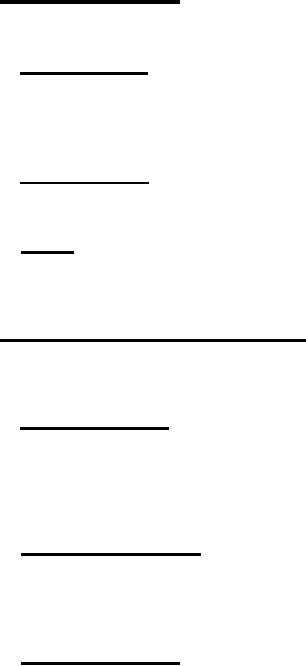 |
|||
|
|
|||
| ||||||||||
|
|  MIL-R-63997B(AR)
a.
Rifle serial number.
b.
Inspection lot number.
c.
Computed measurement of firing pin indent for both
firing mechanism released and not released.
4.7.3 Trigger pull test.
This test shall be performed during
i n d i v i d u a l r i f l e testing In accordance with TABLE III using
Government approved inspection equipment.
4.7.3.1 Minimum load.
The rifle shall be cocked and the
selector lever placed in the "SEMI" position.
T h e minimum load
shall be gradually applied to the center of the trigger and
exerted in line parallel to the axis of the barrel bore.
To be
acceptable, the hammer shall not release.
4.7.3.2 Maximum load.
The rifle shall be cocked and the
maximum load shall b e g r a d u a l l y a p p l i e d t o t h e c e n t e r o f t h e
trigger as before.
To be acceptable, the hammer shall release.
4.7.3.3 Creep.
The rifle shall also be manually tested to
assure that the trigger pull is free of creep (see 3.4.3) and that
the trigger returns under spring action to its normal forward
position after partial or complete trigger pull.
4.7.4 High-pressure resistance test.
This test shall be
performed during individual rifle testing in accordance with TABLE
III, using a Government approved fixture for holding the bolt and
barrel assembly.
4.7.4.1 Test cartridge.
One (1) high-pressure test cartridge
(see 3.4.4) shall be fired in each bolt and barrel assembly.
Unless otherwise specified, the bolt and barrel assembly shall be
tested concurrently.
After proof firing, cartridge cases shall be
examined for bulges, splits, rings and other defects caused by
defective chambers of the barrel assembly.
4.7.4.2 Barrel inspection.
The barrel assembly shall be
magnetic particle inspected in accordance with MIL-STD-1949
utilizing a current of 400 to 500 amperes for circular continuous
magnetization.
The barrel assembly shall be examined for evidence
of cracks, seams and other injurious defects.
4.7.4.3 Bolt inspection.
The bolt shall be magnetic particle
i n s p e c t e d i n a c c o r d a n c e w i t h M I L- S T D- 1 9 4 9 u t i l i z i n g s t a n d a r d f i v e
turn magnetizing coil with a currrent of 200 to 300 amperes.
Both
circular and longitudinal continuous magnetization with wet
fluorescent solution shall be used.
The bolts shall be examined
for evidence of cracks, seams and other injurious defects.
36
|
|
Privacy Statement - Press Release - Copyright Information. - Contact Us |